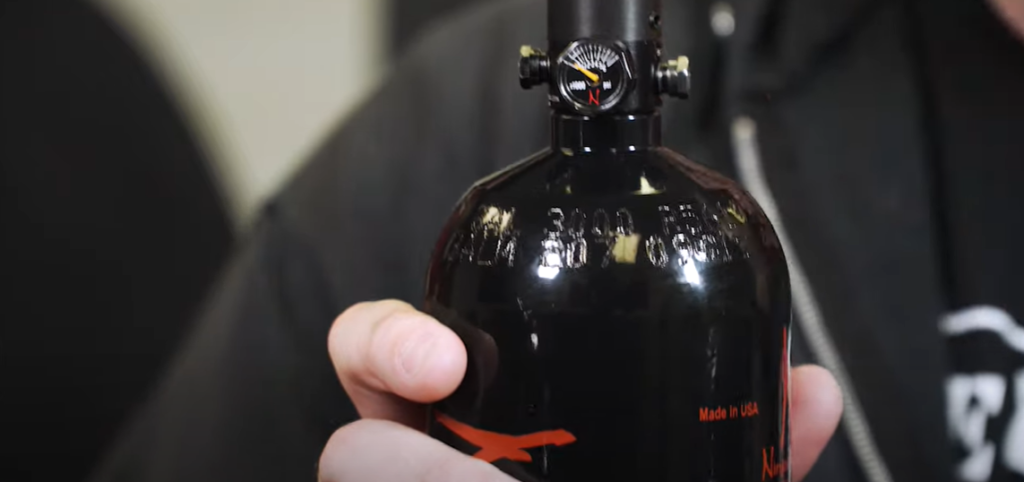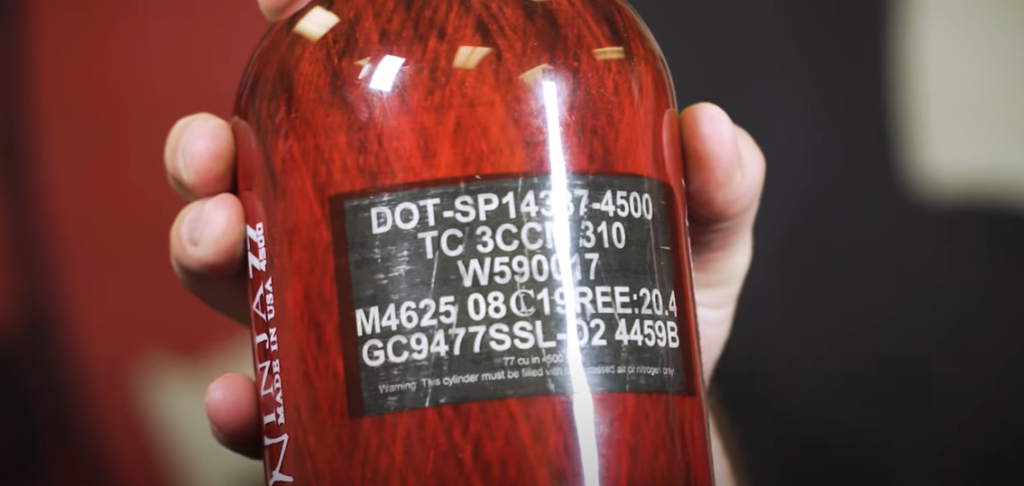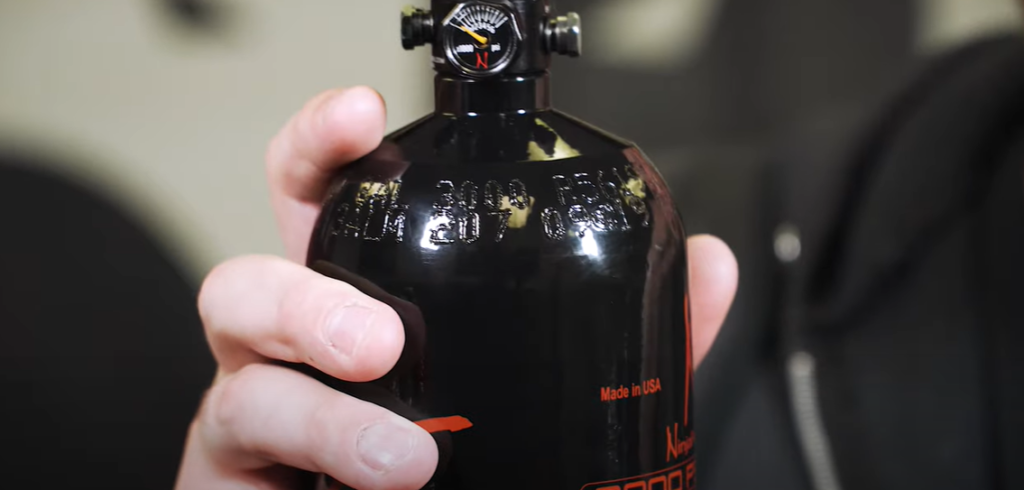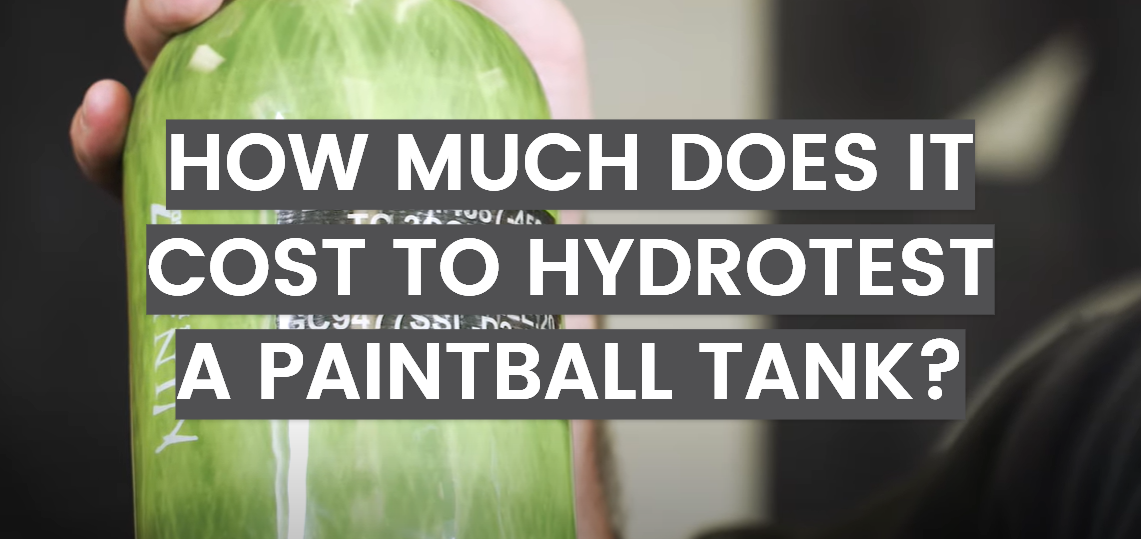Are you an avid paintball enthusiast? Do you thrive off the adrenaline rush and camaraderie that comes with this thrilling sport? If so, then you know how crucial it is to have a reliable paintball tank that can withstand the intense pressures of battle. But have you ever wondered what it takes to ensure the safety and longevity of your tank? Look no further, because this ultimate guide will delve into the intricacies of hydrotesting paintball tanks and, most importantly, how much it will cost you. Get ready to dive deep into the world of paintball tank maintenance, because this is the knowledge that will keep you ahead of the game.
What is the Hydrotest of a Paintball Tank?
When it comes to paintball, one of the most important pieces of equipment is the paintball tank. This is where the compressed air or CO2 is stored and released to propel the paintballs out of your gun.
But just like any other piece of equipment, paintball tanks also need to be tested for safety and functionality. This process is known as a hydrotest. A hydrotest is a safety check that involves filling the paintball tank with water and pressurizing it to its maximum capacity. This tests the structural integrity of the tank and ensures that it can withstand the pressure without any leaks or damage.
During the hydrotest, tanks are also checked for any signs of corrosion or wear and tear. This is important as a damaged tank can be dangerous to use, putting the player at risk of injury.
If a tank fails the hydrotest, it is deemed unsafe and cannot be used. This means that the tank either needs to be repaired or replaced before it can be used again. It’s important for paintball players to understand the importance of hydrotesting their tanks and to always use tanks that have been recently tested. Using an expired tank could not only result in injury but could also lead to fines or penalties from the paintball field.
To keep track of when your tank is due for a hydrotest, make sure to mark the date on the tank itself or keep a record in your paintball gear bag. Safety should always be a top priority in paintball and regular hydro testing ensures that your equipment is safe and ready for play.
So next time you hit the field, make sure to check that your tank is up-to-date on its hydrotest. Your safety and the safety of those around you should never be compromised in pursuit of paintball fun [1].

How is a Paintball Tank Hydro Tested?
Preliminary Inspection
Before a paintball tank undergoes a hydro test, it is crucial to conduct a thorough preliminary inspection to ensure its safety and efficiency. During this inspection, it is important to carefully examine the tank’s exterior for any visible signs of damage or defects, such as cracks, dents, or bulges. Additionally, it is recommended to inspect the tank’s fittings and valves for any signs of wear or leakage.
This meticulous examination helps to identify any potential issues that could compromise the tank’s integrity during the hydro test. If any issues are discovered during the inspection, it is imperative that the tank is not tested and instead promptly taken out of service for necessary repairs or replacement. By conducting a comprehensive inspection, we can ensure the proper functioning and longevity of the paintball tank, promoting a safe and enjoyable experience for all players.
Tank Inspection
Once the preliminary inspection is complete, ensuring the tank’s integrity, it is then carefully emptied of all gas and transported to a specialized hydro testing facility. In this controlled environment, the tank undergoes a comprehensive hydrostatic test to evaluate its structural strength and reliability. The first step in the actual hydro test involves a meticulous visual inspection of the tank’s interior, meticulously examining every nook and cranny for any signs of corrosion, wear, or other potential damage. If any issues are detected during this thorough inspection, the test cannot proceed, and immediate repair or replacement of the tank becomes necessary to ensure safety and optimal performance.
Adding the Pressure
Once the interior inspection is meticulously completed, the tank undergoes a meticulous process to ensure its integrity. It is carefully pressurized with water and securely placed within a state-of-the-art hydro test chamber, specifically designed for this purpose. The chamber is then meticulously filled with water, creating a completely sealed and controlled system that facilitates the rigorous testing process to guarantee utmost reliability and safety.

Final Visual Inspection
Before the actual test begins, the tank undergoes a meticulous visual inspection one last time to ensure its integrity and absence of any leaks or other issues. Trained professionals, armed with specialized tools and equipment, carefully examine every inch of the tank’s surface, scrutinizing for even the slightest signs of vulnerability or potential problems. They pay close attention to the welds, joints, and seams, using advanced techniques such as ultrasonic testing and magnetic particle inspection to detect any hidden flaws or defects. This rigorous process guarantees that only tanks in optimal condition proceed to the testing process, ensuring the highest level of safety and reliability.
Pressurization and Measurement
Once everything is deemed to be in order, the tank is pressurized with water to its maximum capacity. The pressure inside the chamber is then slowly increased until it reaches the required testing pressure, typically around 5/3 of the tank’s working pressure. This process allows technicians to measure the expansion rate of the tank and determine if it meets safety standards.
Importance of Hydro Tests
It ensures safety and reliability
Hydrostatic testing is a crucial process in industries that deal with fluid transportation, storage, or containment. The test involves filling up the equipment or pipeline with water to verify its structural integrity by applying internal pressure. The main purpose of this test is to ensure safety and reliability of the equipment before it is put into operation.
During hydrostatic testing, any leaks, cracks or failures in the equipment can be identified and addressed before it starts functioning. This not only prevents accidents and potential damage to property but also ensures that the equipment is able to function at its full capacity without any interruptions.
It’s required by law and industry standards
Hydrostatic testing is not only important for safety purposes but also mandated by law and industry standards. In many countries, hydro tests are required by law to be conducted periodically on certain types of equipment such as pressure vessels or boilers. Failure to comply with these regulations can result in legal consequences.
Industry standards, such as those set by the American Society of Mechanical Engineers (ASME), also require hydrostatic testing for certain equipment to ensure compliance with safety and performance standards. This ensures consistency and uniformity in the quality of equipment used across industries.

It helps detect hidden defects
One of the major benefits of hydrostatic testing is its ability to detect hidden defects that may not be visible during visual inspections. These defects include cracks, leaks, and weaknesses in the equipment’s structure that may not be apparent on the surface. By filling the equipment with water and applying pressure, these defects can be identified and addressed before they cause any potential harm.
You might get kicked out of your paintball place if you don’t do it!
Aside from its serious applications in industries, hydrostatic testing is also important for recreational activities such as paintball. Paintball guns use compressed air or carbon dioxide to propel paint-filled pellets, and regular hydro tests are necessary to ensure the safety of players. Without a valid hydro test, participants may not be allowed to use their equipment at certain facilities, as it may pose a potential safety hazard.
You might get the paintball establishment in trouble if you don’t do it!
Not only can failure to conduct hydro tests result in consequences for individual players, but it can also lead to legal trouble for paintball establishments. These facilities are responsible for enforcing safety measures and regulations, including proper equipment maintenance and testing. Failure to comply with these standards could result in accidents or injuries, leading to potential lawsuits.
Hydrostatic testing is not only crucial for safety and reliability, but it also has legal implications that must be considered by individuals and industries alike. Ignoring the importance of this test can have serious consequences, making it a necessary step in ensuring the overall safety and functionality of equipment. Whether for industrial or recreational purposes, hydrostatic testing should never be overlooked [2].
Cost of a Paintball Tank Hydrotest
If you’re an avid paintball player, you know how important it is to have a reliable and safe paintball tank. These tanks go through a lot of wear and tear during games and need to be hydrotested regularly to ensure they are still within safety standards.
There are some factors that influence the price of paintball tank hydrotest. These factors include the type of tank, its size and the location where you get it tested. For example, if you have a carbon fiber tank, the cost may be higher compared to aluminum tanks because they require specialized equipment for hydrotesting. Additionally, larger tanks will typically cost more to test than smaller tanks due to the amount of air needed to conduct the test.
The location where you get your tank tested can also affect the cost. If you go to a local paintball shop, the price may be cheaper compared to a specialized scuba diving store. However, it’s important to ensure that wherever you go for hydrotesting, they have the proper certifications and equipment needed to conduct the test safely and accurately.
Overall, while it may seem like an added expense, getting your paintball tank hydro tested is crucial for the safety of yourself and others on the field. It’s recommended to get your tank tested every 3-5 years, so be sure to factor this into your budget when planning for paintball games. And remember, safety should always be a top priority when it comes to any sport or activity.
So don’t skimp on getting your tank hydro tested and play with peace of mind knowing that you have a safe and reliable tank. Keep the fun going without having to worry about any potential accidents caused by an expired or faulty paintball tank. Stay safe, stay responsible, and enjoy the game! So, whether you’re a beginner or a seasoned paintball player, make sure to stay on top of your tank’s hydro testing schedule and keep the game safe and enjoyable for everyone involved [3].

FAQ
How much does a Hydro paintball tank?
The cost of a Hydro paintball tank can vary depending on its size, brand, and additional features. Typically, a new Hydro paintball tank can range from $50 to $150, but it’s important to consider factors such as capacity, materials, and certifications. Additionally, if you’re on a budget, you may also be able to find used tanks in good condition at a lower price, which can provide a more economical option for paintball enthusiasts.
How long does a Hydro paintball tank last?
A Hydro paintball tank needs to be hydro tested every 5 years according to industry standards. This involves draining the tank and subjecting it to high pressure to check for any potential leaks or defects. As long as there are no issues, the tank can be refilled and used for another 5 years. With proper maintenance and handling, a Hydro paintball tank can last for many years before needing to be replaced.
How many times can you hydro test a paintball tank?
A Hydro paintball tank can typically be hydro tested multiple times before needing to be replaced. As mentioned earlier, industry standards recommend hydro testing every 5 years for safety purposes. However, some tanks may be able to undergo more tests depending on their condition and the discretion of the testing facility. It’s important to note that continually hydro testing a tank may eventually cause wear and tear, so it’s best to follow the recommended guidelines and replace the tank if necessary.
What is a Hydro paintball tank used for?
A Hydro paintball tank is a crucial piece of equipment in the game of paintball. It stores compressed air or carbon dioxide (CO2) that propels paintballs out of the gun barrel, giving players the power to accurately hit their targets. Without a functioning tank, players would not be able to participate in the game and have an enjoyable experience. Hydro paintball tanks are also used for other activities such as airsoft and scuba diving, making them versatile and essential for multiple recreational purposes.
Are Hydro paintball tanks safe?
Hydro paintball tanks undergo strict testing and certification processes to ensure their safety for use in the game of paintball. This includes hydro testing every 5 years, as well as having proper certifications and markings from regulatory organizations. Additionally, proper handling and storage of the tank is crucial to maintain its safety. As long as these measures are taken, Hydro paintball tanks are considered safe for use in the sport and other activities. So, it is important to follow recommended guidelines and regularly maintain your tank for optimal safety. Finally, always make sure to purchase tanks from reputable brands and dealers to ensure their quality and safety standards.

What sizes do Hydro paintball tanks come in?
Hydro paintball tanks come in a variety of sizes to accommodate different player preferences and needs. The most common sizes range from 48 cubic inches (CI) to 68 CI, with the larger size providing more shots per fill. Additionally, tanks can also come in different shapes such as round or flat bottom for comfort and stability during gameplay. It’s important to choose a tank size that not only fits your budget but also allows you to play comfortably without sacrificing performance.
What happens if you don’t Hydrotest paintball tank?
If you do not hydro test your paintball tank, it may lead to potential safety hazards and compromises the integrity of the tank. Over time, tanks can develop leaks or defects that are not visible to the naked eye, which can be dangerous during gameplay. Additionally, failure to comply with industry standards and regulations may result in legal consequences or being banned from certain paintball facilities. It’s important to prioritize safety and regularly hydro test your paintball tank for a worry-free and enjoyable playing experience. So, always make sure to set reminders or schedule appointments for hydro testing to avoid any potential risks.
Useful Video: When do you Hydrotest a Paintball Tank | When to Re-Hydro Your Tank | Lone Wolf Paintball Michigan
Conclusion Paragraph
So, the hydro testing paintball tank is an important procedure to consider when looking into paintball equipment. It allows for efficient refilling of air tanks, reducing downtime during a game or practice session. Additionally, it is a safer option compared to manually refilling the tank with compressed air. Hydro Testing has its own price. It depends on the size and type of tank, as well as the location of the hydro testing facility. The average price for hydro testing can range from 50 to 100 dollars.
References:
- https://www.velocitypaintball.com/2015/02/hydrotest
- https://hobbystrategy.com/paintball-tanks-re-hydrotested/
- https://hobbystrategy.com/how-much-does-it-cost-to-hydrotest-a-paintball-tank/









Leave a Review